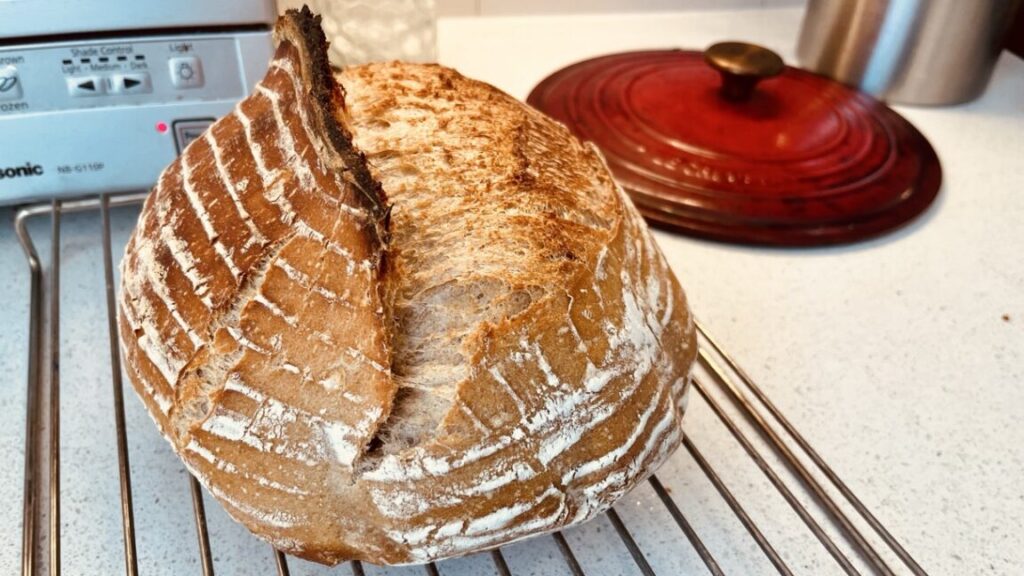[ad_1]
One year ago, I didn’t know how to bake bread. I just knew how to follow a recipe.
If everything went perfectly, I could turn out something plain but palatable. But should anything change—temperature, timing, flour, Mercury being in Scorpio—I’d turn out a partly poofy pancake. I presented my partly poofy pancakes to people, and they were polite, but those platters were not particularly palatable.
During a group vacation last year, a friend made fresh sourdough loaves every day, and we devoured it. He gladly shared his knowledge, his starter, and his go-to recipe. I took it home, tried it out, and made a naturally leavened, artisanal pancake.
I took my confusion to YouTube, where I found Hendrik Kleinwächter’s “The Bread Code” channel and his video promising a course on “Your First Sourdough Bread.” I watched and learned a lot, but I couldn’t quite translate 30 minutes of intensive couch time to hours of mixing, raising, slicing, and baking. Pancakes, part three.
It felt like there had to be more to this. And there was—a whole GitHub repository more.
The Bread Code gave Kleinwächter a gratifying second career, and it’s given me bread I’m eager to serve people. This week alone, I’m making sourdough Parker House rolls, a rosemary olive loaf for Friendsgiving, and then a za’atar flatbread and standard wheat loaf for actual Thanksgiving. And each of us has learned more about perhaps the most important aspect of coding, bread, teaching, and lots of other things: patience.
Hendrik Kleinwächter on his Bread Code channel, explaining his book.
Resources, not recipes
The Bread Code is centered around a book, The Sourdough Framework. It’s an open source codebase that self-compiles into new LaTeX book editions and is free to read online. It might have exactly one recipe, if you can call a 68-page middle-section journey a recipe. It has 17 flowcharts, 15 tables, and dozens of timelines, process illustrations, and photos of sourdough going both well and terribly. Like any cookbook, there’s a bit about Kleinwächter’s history with this food, and some sourdough bread history. Then the reader is dropped straight into “How Sourdough Works,” which is in no way a summary.
“To understand the many enzymatic reactions that take place when flour and water are mixed, we must first understand seeds and their role in the lifecycle of wheat and other grains,” Kleinwächter writes. From there, we follow a seed through hibernation, germination, photosynthesis, and, through humans’ grinding of these seeds, exposure to amylase and protease enzymes.
I had arrived at this book with these specific loaf problems to address. But first, it asks me to consider, “What is wheat?” This sparked vivid memories of Computer Science 114, in which a professor, asked to troubleshoot misbehaving code, would instead tell students to “Think like a compiler,” or “Consider the recursive way to do it.”
And yet, “What is wheat” did help. Having a sense of what was happening inside my starter, and my dough (which is really just a big, slow starter), helped me diagnose what was going right or wrong with my breads. Extra-sticky dough and tightly arrayed holes in the bread meant I had let the bacteria win out over the yeast. I learned when to be rough with the dough to form gluten and when to gently guide it into shape to preserve its gas-filled form.
I could eat a slice of each loaf and get a sense of how things had gone. The inputs, outputs, and errors could be ascertained and analyzed more easily than in my prior stance, which was, roughly, “This starter is cursed and so am I.” Using hydration percentages, measurements relative to protein content, a few tests, and troubleshooting steps, I could move closer to fresh, delicious bread. Framework: accomplished.
I have found myself very grateful lately that Kleinwächter did not find success with 30-minute YouTube tutorials. Strangely, so has he.
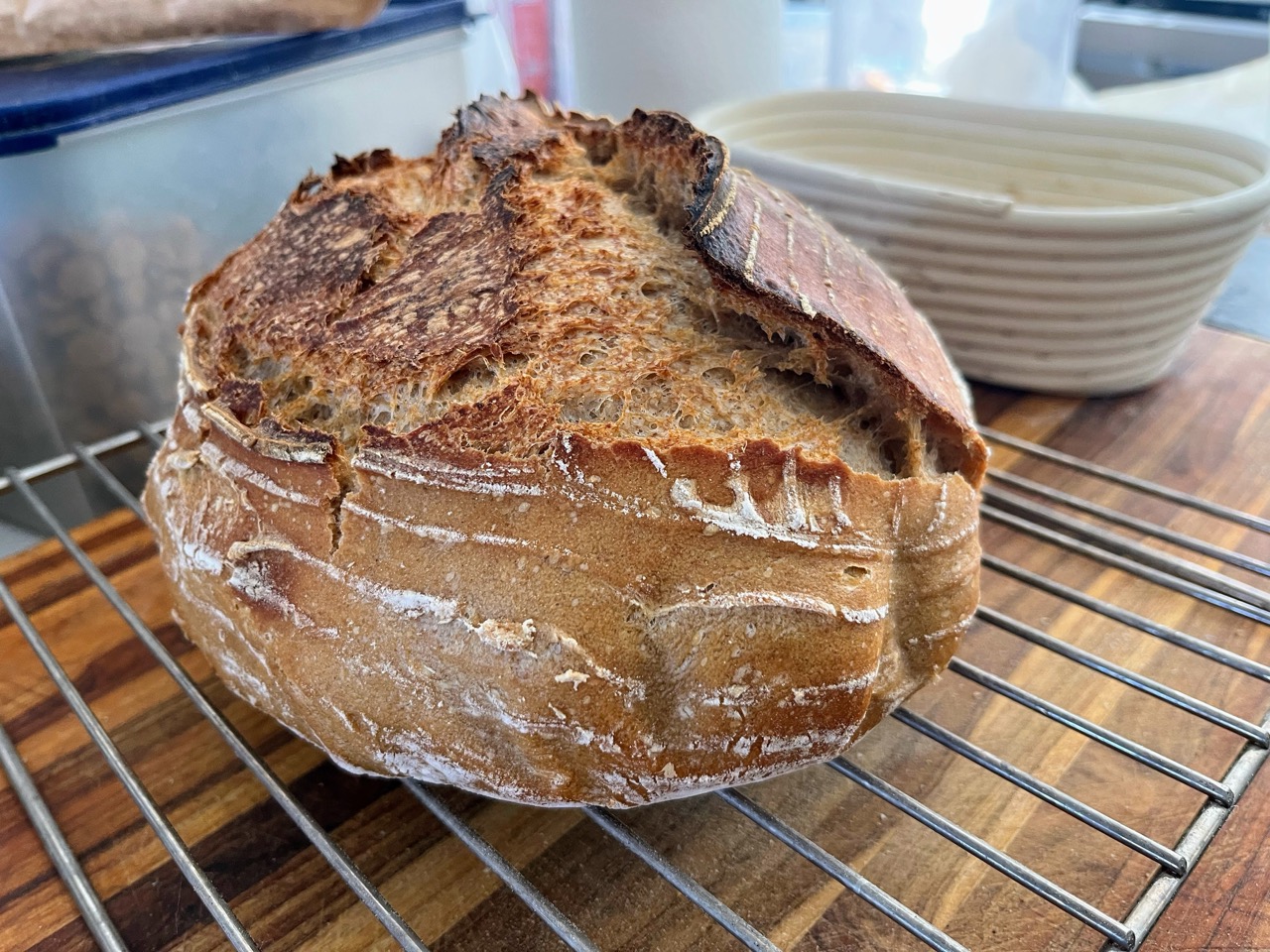
Kevin Purdy
Sometimes weird scoring looks pretty neat.
Kevin Purdy
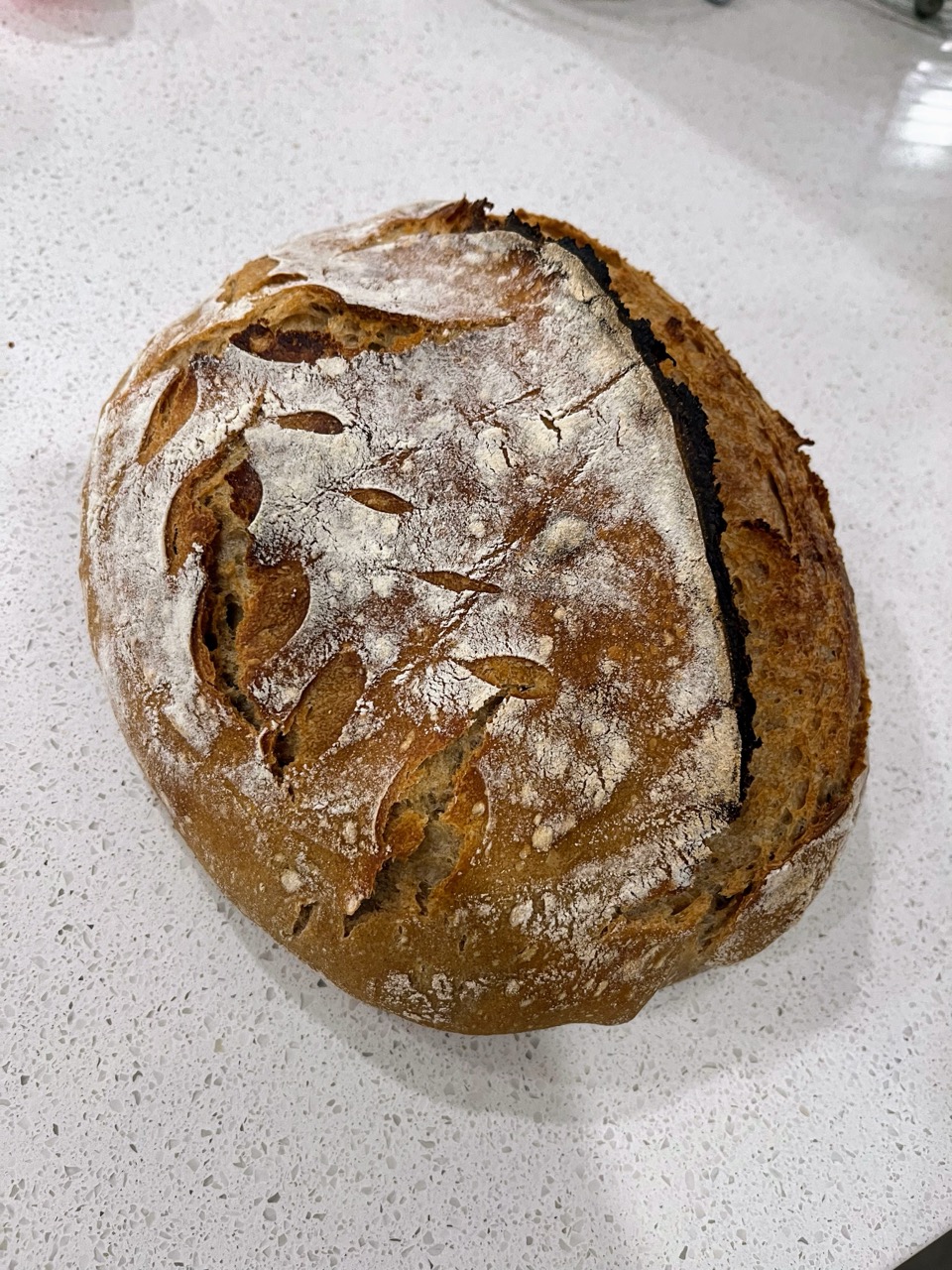
Kevin Purdy
I have tried doing decorative “leaves” and other little scoring designs, with varied results.
Kevin Purdy
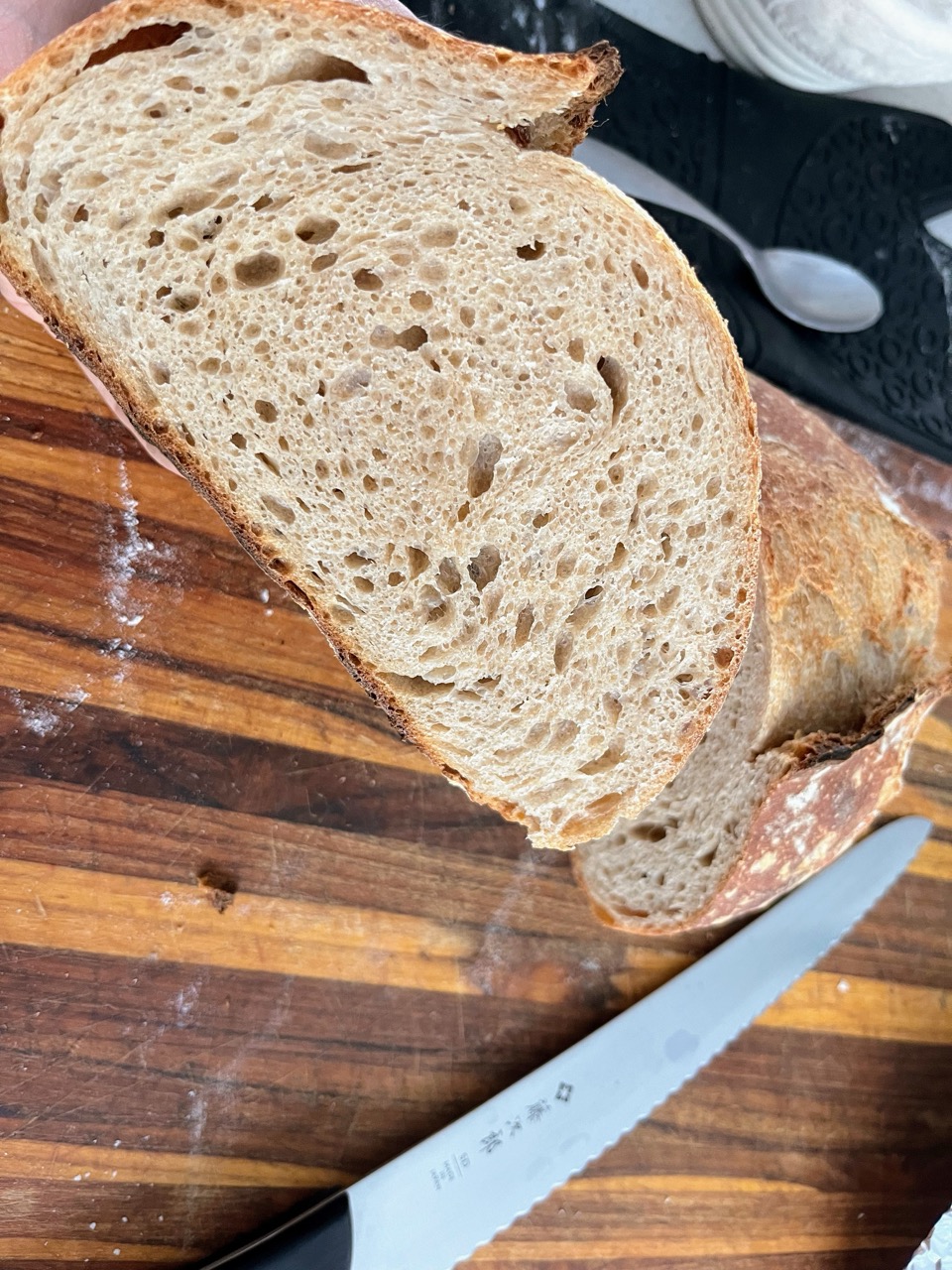
Kevin Purdy
Cross section.
Kevin Purdy
I have tried doing decorative “leaves” and other little scoring designs, with varied results.
Kevin Purdy
Cross section.
Kevin Purdy
The slow bread of childhood dreams
“I have had some successful startups; I have also had disastrous startups,” Kleinwächter said in an interview. “I have made some money, then I’ve been poor again. I’ve done so many things.”
Most of those things involve software. Kleinwächter is a German full-stack engineer, and he has founded firms and worked at companies related to blogging, e-commerce, food ordering, travel, and health. He tried to escape the boom-bust startup cycle by starting his own digital agency before one of his products was acquired by hotel booking firm Trivago. After that, he needed a break—and he could afford to take one.
“I went to Naples, worked there in a pizzeria for a week, and just figured out, ‘What do I want to do with my life?’ And I found my passion. My passion is to teach people how to make amazing bread and pizza at home,” Kleinwächter said.
Kleinwächter’s formative bread experiences—weekend loaves baked by his mother, awe-inspiring pizza from Italian ski towns, discovering all the extra ingredients in a supermarket’s version of the dark Schwarzbrot—made him want to bake his own. Like me, he started with recipes, and he wasted a lot of time and flour turning out stuff that produced both failures and a drive for knowledge. He dug in, learned as much as he could, and once he had his head around the how and why, he worked on a way to guide others along the path.
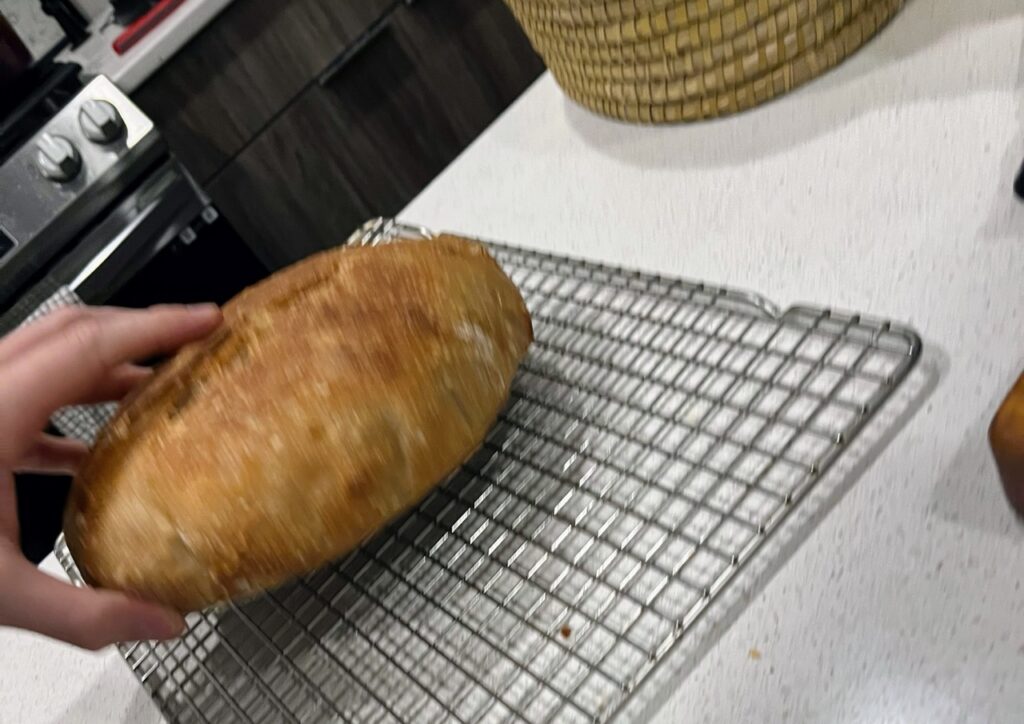
Kevin Purdy
Too thick to be a flatbread, too flat to slice for breakfast: The painful pancake.
Kevin Purdy
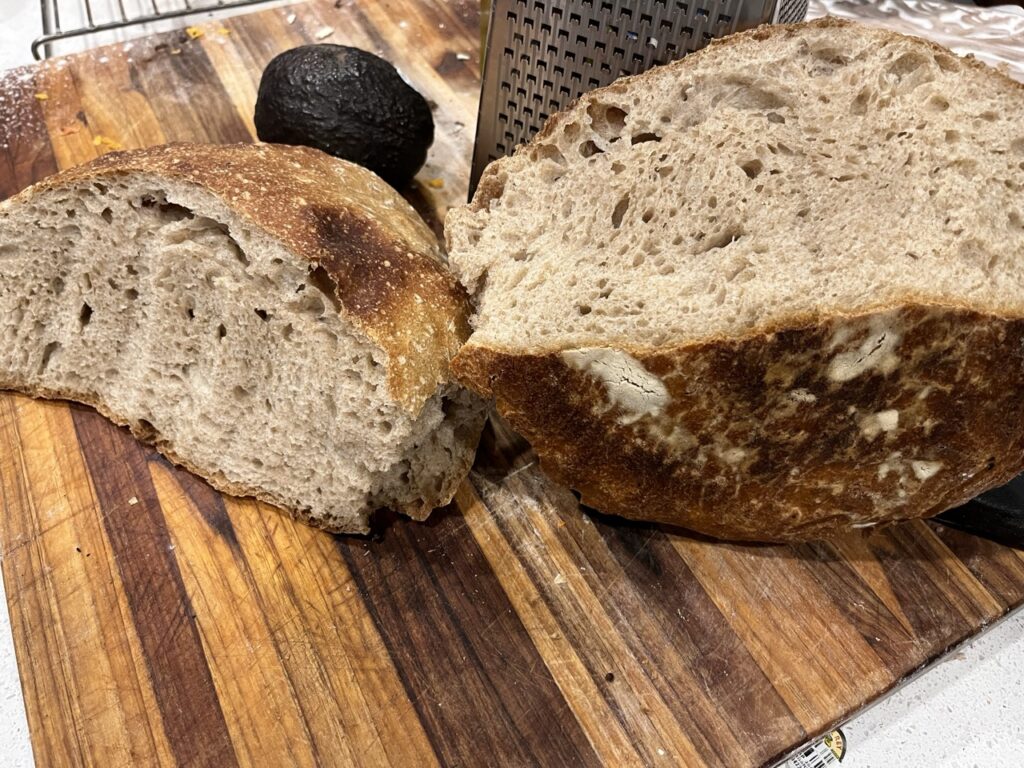
Kevin Purdy
You wanted avocado toast; now you’ve got… this.
Kevin Purdy
Too thick to be a flatbread, too flat to slice for breakfast: The painful pancake.
Kevin Purdy
You wanted avocado toast; now you’ve got… this.
Kevin Purdy
Bugs and syntax errors in baking
When using recipes, there’s a strong, societally reinforced idea that there is one best, tested, and timed way to arrive at a finished food. That’s why we have America’s Test Kitchen, The Food Lab, and all manner of blogs and videos promoting food “hacks.” I should know; I wrote up a whole bunch of them as a young Lifehacker writer. I’m still a fan of such things, from the standpoint of simply getting food done.
As such, the ultimate “hack” for making bread is to use commercial yeast, i.e., dried “active” or “instant” yeast. A manufacturer has done the work of selecting and isolating yeast at its prime state and preserving it for you. Get your liquids and dough to a yeast-friendly temperature and you’ve removed most of the variables; your success should be repeatable. If you just want bread, you can make the iconic no-knead bread with prepared yeast and very little intervention, and you’ll probably get bread that’s better than you can get at the grocery store.
Baking sourdough—or “naturally leavened,” or with “levain”—means a lot of intervention. You are cultivating and maintaining a small ecosystem of yeast and bacteria, unleashing them onto flour, water, and salt, and stepping in after they’ve produced enough flavor and lift—but before they eat all the stretchy gluten bonds. What that looks like depends on many things: your water, your flours, what you fed your starter, how active it was when you added it, the air in your home, and other variables. Most important is your ability to notice things over long periods of time.
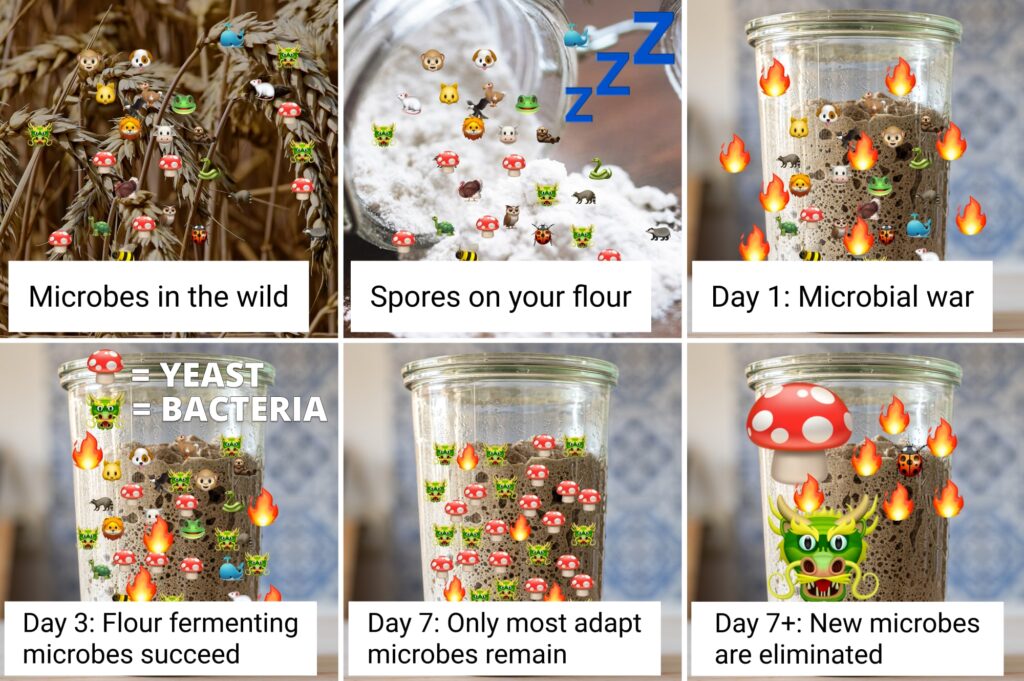
The Bread Code
The Bread Code‘s depiction of how sourdough starters are born, developed, and refined.
The Bread Code
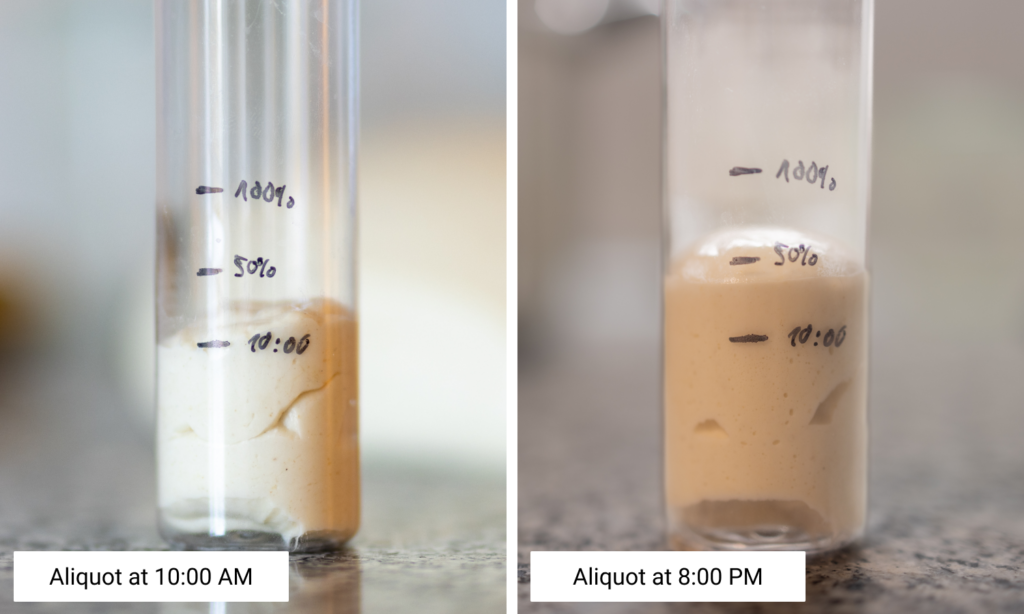
The Bread Code
If you take nothing else from The Bread Code, take this: You can measure a sample of your dough in an easy-to-read container, rather than guess at a big bowl.
The Bread Code
The Bread Code‘s depiction of how sourdough starters are born, developed, and refined.
The Bread Code
If you take nothing else from The Bread Code, take this: You can measure a sample of your dough in an easy-to-read container, rather than guess at a big bowl.
The Bread Code
When things go wrong, debugging can be tricky. I was able to personally ask Kleinwächter what was up with my bread, because I was interviewing him for this article. There were many potential answers, including:
- I should recognize, first off, that I was trying to bake the hardest kind of bread: Freestanding wheat-based sourdough
- You have to watch—and smell—your starter to make sure it has the right mix of yeast to bacteria before you use it
- Using less starter (lower “inoculation”) would make it easier not to over-ferment
- Eyeballing my dough rise in a bowl was hard; try measuring a sample in something like an aliquot tube
- Winter and summer are very different dough timings, even with modern indoor climate control.
But I kept with it. I was particularly susceptible to wanting things to go quicker and demanding to see a huge rise in my dough before baking. This ironically leads to the flattest results, as the bacteria eats all the gluten bonds. When I slowed down, changed just one thing at a time, and looked deeper into my results, I got better.

Credit:
The Bread Code
The Bread Code YouTube page and the ways in which one must cater to algorithms.
Credit:
The Bread Code
YouTube faces and TikTok sausage
Emailing and trading video responses with Kleinwächter, I got the sense that he, too, has learned to go the slow, steady route with his Bread Code project.
For a while, he was turning out YouTube videos, and he wanted them to work. “I’m very data-driven and very analytical. I always read the video metrics, and I try to optimize my videos,” Kleinwächter said. “Which means I have to use a clickbait title, and I have to use a clickbait-y thumbnail, plus I need to make sure that I catch people in the first 30 seconds of the video.” This, however, is “not good for us as humans because it leads to more and more extreme content.”
Kleinwächter also dabbled in TikTok, making videos in which, leaning into his German heritage, “the idea was to turn everything into a sausage.” The metrics and imperatives on TikTok were similar to those on YouTube but hyperscaled. He could put hours or days into a video, only for 1 percent of his 200,000 YouTube subscribers to see it unless he caught the algorithm wind.
The frustrations inspired him to slow down and focus on his site and his book. With his community’s help, The Bread Code has just finished its second Kickstarter-backed printing run of 2,000 copies. There’s a Discord full of bread heads eager to diagnose and correct each other’s loaves and occasional pull requests from inspired readers. Kleinwächter has seen people go from buying what he calls “Turbo bread” at the store to making their own, and that’s what keeps him going. He’s not gambling on an attention-getting hit, but he’s in better control of how his knowledge and message get out.
“I think homemade bread is something that’s super, super undervalued, and I see a lot of benefits to making it yourself,” Kleinwächter said. “Good bread just contains flour, water, and salt—nothing else.”
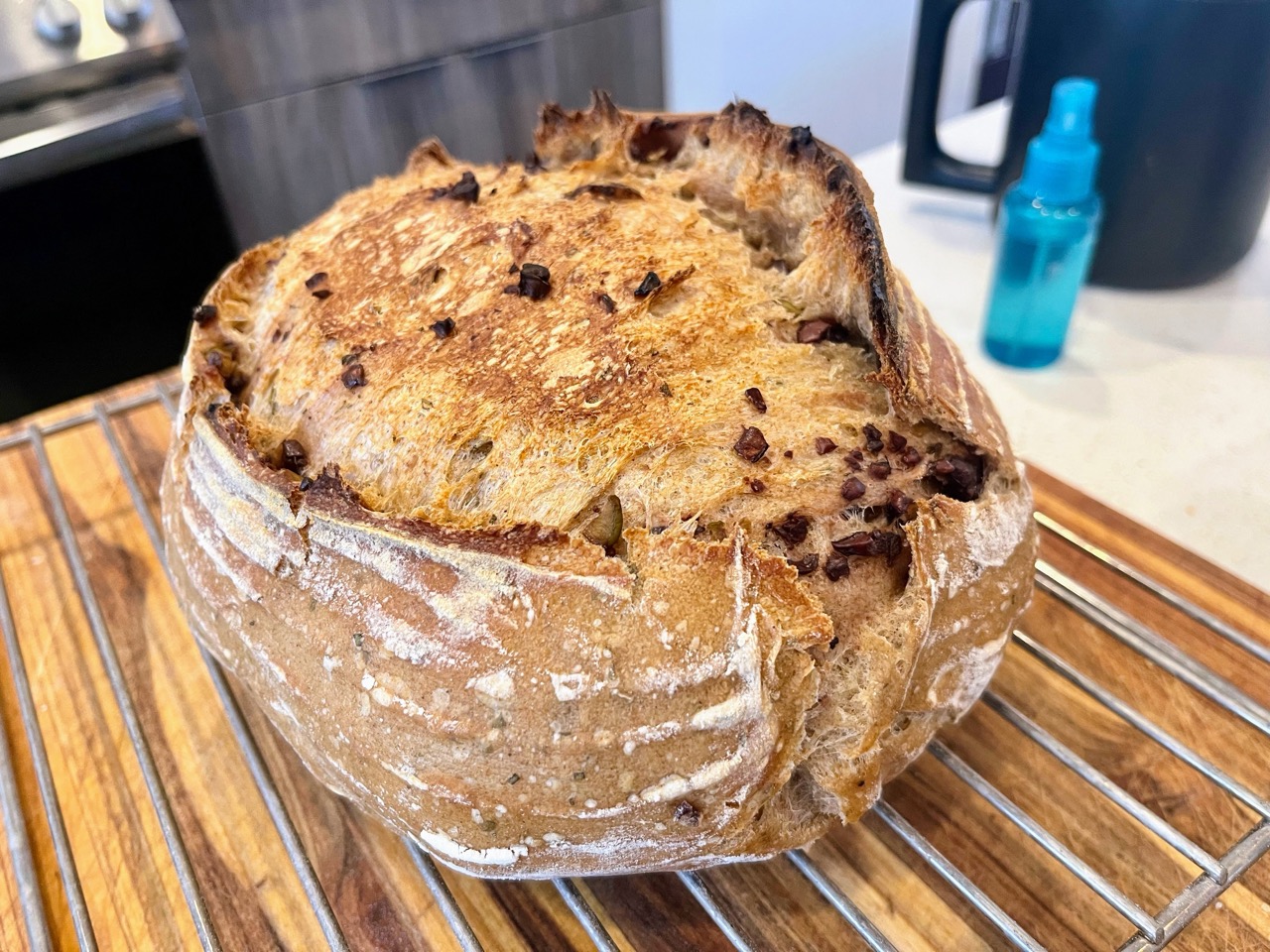
Credit:
Kevin Purdy
A test loaf of rosemary olive sourdough bread. An uneven amount of olive oil ended up on the top and bottom.
Credit:
Kevin Purdy
You gotta keep doing it—that’s the hard part
I can’t say it has been entirely smooth sailing ever since I self-certified with The Bread Code framework. I know what level of fermentation I’m aiming for, but I sometimes get home from an outing later than planned, arriving at dough that’s trying to escape its bucket. My starter can be very temperamental when my house gets dry and chilly in the winter. And my dough slicing (scoring), being the very last step before baking, can be rushed, resulting in some loaves with weird “ears,” not quite ready for the bakery window.
But that’s all part of it. Your sourdough starter is a collection of organisms that are best suited to what you’ve fed them, developed over time, shaped by their environment. There are some modern hacks that can help make good bread, like using a pH meter. But the big hack is just doing it, learning from it, and getting better at figuring out what’s going on. I’m thankful that folks like Kleinwächter are out there encouraging folks like me to slow down, hack less, and learn more.
[ad_2]
Source link

